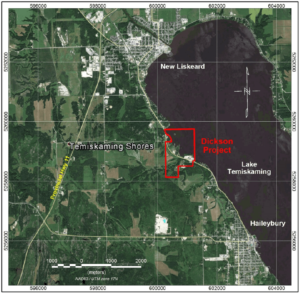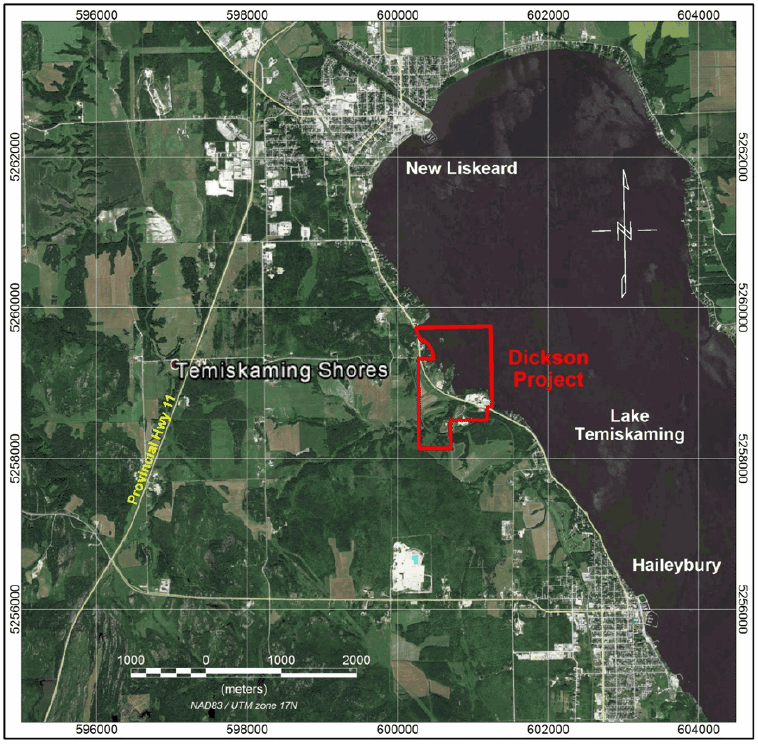The battery metal boom we trampolined around on at the start of the year seems to be more a grenade than a nuke to global mining at this point, despite rising demands and take-off deals being signed all around us, stock prices are weighed down and a lethargic. There is money to be made if you have a targeted and well organised project though…
Exploration geologist Michaela Flanigan writes from Australia for MiningIR.
Stay on top of our ASX coverage HERE.

Cobalt is a metal largely produced as a secondary product of copper or nickel extraction, but International Cobalt Resources Ltd. (CSE: CO – ASX:ICR – FRA: 42L) has made it the primary focus of their business.
Listing today (22nd October 2018), ICR owns the Blue Mac Project (Au-Co) and Dickson Project (Ag-Co) in Ontario, purchased from CBLT Inc. in June 2018, as well as an option to acquire the Bambino Project (Ni-Cu-Co-PGE) from Marty Huber in Quebec.
ICR is hoping to raise up to $6 million AUD from its initial public offering, if it sells 20 million shares at a price of $0.30 AUD each. The minimum subscription has been set at 16,666,667 shares to raise $5 million AUD. The funds procured will largely go towards exploration on the projects: geophysical (EM, IP and FLTM) and geochemistry (soil, till and rock chip) at all three sites, as well as up to 4000m of diamond drilling at Blue Mac, up to 1200m at Dickson, and up to 5000m at Bambino. ICR commissioned an Independent Technical Assessment Report from CSA Global, which endorsed these exploration strategies.

The greenfields Blue Mac Project covers an area of approximately 5.25km2 located around 28km north of Sudbury, Ontario, within the Sudbury Mining District. According the CSA Global, the most prospective formation on the project is the 2,200 Ma Nipissing Gabbros, which are regionally associated with several styles of mineralisation. On the Blue Mac site, two historical shafts have been sunk, attesting to the presence of some gold mineralisation.
It appears that the shafts were targeted at breccias at the contact of the Nipissing Gabbros with the Mississagi formation, a sedimentary sequence that forms part of the Huronian Supergroup. This is in line with the mineralisation found at the Scadding Gold Mine, which was mined historically and in modern times operated from 1984-1990, producing around 914kg of gold from 127,000t of ore. This mine also exploited brecciated regions on the contact between Nipissing Gabbros and Huronian sediments.


The Dickson Project is located in the Larder Lake Mining District in northern Ontario, and covers around 2.42km2 on the shores of Lake Timiskaming. The project lies in the enticingly-named Cobalt Embayment, a graben that collected sediment in Palaeoproterozoic times.
Virtually no detailed mapping has been carried out around the greenfields Dickson Project, although an abandoned mine that was worked intermittently between 1915-1922, the Dickson Creek Mine, lies on the project. In this region, contacts between the Nipissing Gabbros and the basement greenstones and granites of the Abitibi province, as well as the Huronian Supergroup, are associated with silver-cobalt veining which was extensively mined around the turn of the 20th century, but which has received virtually no attention since.
The Bambino Project for which ICR has an exclusive option covers an area of approximately 19.55km2 in western Quebec. It lies in the felsic volcanics of the Baby Group section of the Belleterre-Angliers greenstone belt, where the Group is intruded by gabbroic sills and dykes. Mineralisation on the project, if found, is expected to occur in association with larger, differentiated specimens of such intrusives, presumably in the nickel-copper-cobalt-PGE style documented elsewhere in the belt.

The Midrim deposit, controlled by Meteoric Resources Ltd. (ASX:MEI) and located 2km from Bambino, is the best-studied of several potentially economic sulphide occurrences, but to date no producing mine has been located in the Baby Group. In recent times, Aurora Platinum Corp. has performed both aerial geophysical surveys and rock chip sampling in the region, but these were done at too broad a scale to return significant results for the Bambino Project. What rock sampling was carried out on the prospects did not return any anomalies.
Investment in cobalt extraction is timely, given that global demand for cobalt products has grown an average of 7.9% pa since 2010. The Democratic Republic of the Congo accounts for 69% of all cobalt production worldwide, but the industry there and in the rest of central Africa has been plagued by reports of human and environmental abuses.
With demand for cobalt growing as the proliferation of portable electronics continues, and with public scrutiny periodically focussed on the humanitarian and environmental standards associated with the extraction of the metals necessary for such devices, investment in cobalt in locations with greater protections for workers and natural systems could be a good public relations move.

Original content – written for MiningIR by Michaela Flanigan, an experienced research and exploration geologist based between projects in Germany and Australia
MiningIR.com hosts a variety of articles from a range of sources, our content, while interesting, should not be considered as formal financial advice. Always seek professional guidance and consult a range of sources before investing.













